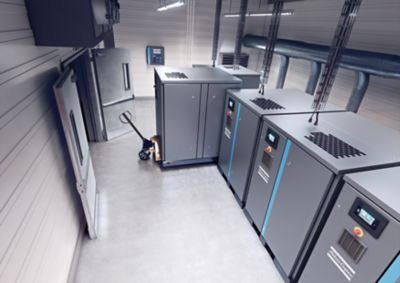Wouldn’t it be great if there were a way to make compressed air systems more efficient while saving money and the environment at the same time? The bad news is that there isn’t one way to do that. The great news is that there are ten ways! This guide to carbon reduction in production is intended to increase awareness of the potential savings in compressed air generation, treatment, and distribution.
Reasons why you should download this guide
A brief overview of the guide
These 10 steps will save money in the long run, some of them cost very little to implement. In fact after you finish reading this guide you will be able to take meaningful action right away to make your production greener and more efficient.
1. Application & installation
Before expanding, replacing or improving an existing compressed air system, you should first look to eliminate waste in the current system. A common mistake is to base the selection of new equipment on the size of the existing hardware and then simply scale it up to take into account anticipated growth.
2. Storage & distribution
The size of the air receiver and pipework in an application can directly impact energy consumption. As operations grow, companies often simply extend their pipework to meet the needs of the new equipment. However companies should review the design of their compressed air pipework.
3. Air quality
Clean air has its cost - both in terms of energy and money. That's why you should always know which air purity your application requires. If you clean up the air too much, you'll waste energy and unnecessarily strain the environment, if you clean it up too little you can jeoopardise your production.
4. Volume & flow pattern
By better understanding your air demand, you may be able to save a substantial amount of money the next time you make an investment in a compressor. If you eliminate the inefficiencies of your compressed air network, your next compressor may need to be a lot smaller than you think - or you may not even need a new one at all just yet.

